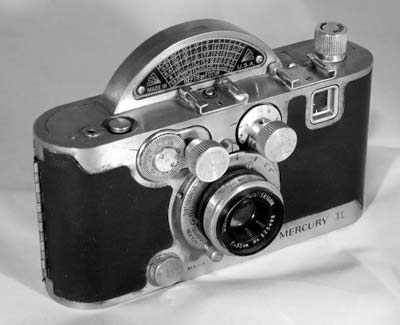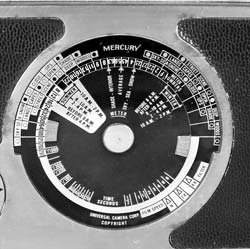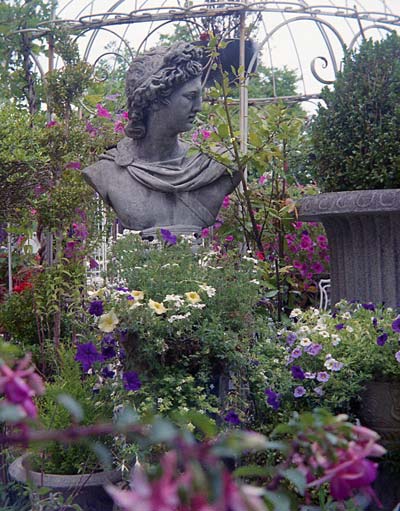Univex Mercury II (model CX)
Specification

| Manufacturer | : | Univex |
|---|---|---|
| Produced | : | 1945 - |
| Classification | : | Subminiature |
| Body Type | : | Solid Body |
| Construction | : | Cast Aluminium/Magnesium Alloy |
| Film Type | : | 135 |
| Film Width | : | 35mm |
| ImageSize | : | 18 x 24 mm |
| No. of Images | : | 36 |
| Lens Type | : | Universal Tricor |
| Focal Length | : | 35mm |
| Focus Type | : | Variable |
| Focal Range | : | 1ft 6in - inf. |
| Aperture Type | : | 8 Blade Iris |
| Aperture | : | f/2.7 - f/22 |
| Shutter Type | : | Rotary Focal Plane |
| Shutter Speeds | : | T, B, 1/20-1/1000 sec |
| Size (w x h x d) | : | 145 x 92 x 54 mm |
| Weight | : | 620g |
Art Deco Credentials
![]()
Limited: Minor and insubstantial
- Produced after the main Art Deco period.
- Based on the 1938 Mercury I (model CC).
- Cast aluminium body.
- Triple triangular flashes on Depth of Focus panels.
Description
The Mercury II (model CX) was produced from 1945 and was an upgraded version of the 1938 Mercury I (model CC). The Universal Camera Corp. suspended their normal camera-making operations during World War II in order to manufacture binoculars for the armed forces. After the war, they had decided to revamp the popular Mercury in order to allow it to accept standard 35mm film as opposed to the special Univex #200 film required for the Mercury I. A rewind button, rewind knob, and a permanent take-up spool were added as necessities for the standard 35mm film. Other improvements of the II over the I were:- a redesigned film counter dial and enlarged shutter wind and shutter speed knobs. However on the negative side, a synthetic covering was used instead of the leather on the Mercury I. The aluminum/magnesium alloy of the Mercury II did not retain its luster like the aluminum alloy of the Mercury I.

The Mercury was unlike anything Universal had offered before having the unique rotary shutter. This large rotary film plane shutter is responsible for the circular protrusion on top of the camera. Universal's Chief Engineer, George Kende, had previously designed and engineered a compact 8mm movie camera called the UniveX Cine 8. He used his knowledge of shutters used in movie cameras to design a unique rotary shutter for still cameras that would be extremely accurate, and capable of very high speeds. Basically, two slotted discs move with respect to each other to produce a varying width slit which travels at constant speed across the film plane. It is capable of extremely accurate speeds up to 1/1000th of a second. Not content with producing America's fastest candid camera of the time, in June of 1939, Universal introduced the Mercury Model CC-1500, named after its top shutter speed of 1/1500s.
The Mercury was the first camera to have internal flash synchronization, known today as the hot shoe. This camera is a viewfinder camera with Galilean type optical finder. It is designed for half frame 35mm to give 65 half size (18x24mm) exposures. It has a variety of lenses available including:- Tricor f/2.7 35mm (coated); Tricor f/3.5 35mm (non coated); Hexar f/2.0. The body is equipped with a depth of field table and a rather comprehensive exposure calculator. It also has a disc to use as a reminder for the film you are using.
How to Use
You can find the manual here:- Mercury II User Manual.
There is an issue trying to get the negatives scanned and printed. Most 35mm scanners can only handle full frame 35mm negatives. This camera produces half frame images that confuses the scanner so you can't scan automatically. You will need to scan each image individually which can be costly.
Photographs taken with this Camera
Film used was Kodak Gold 200




